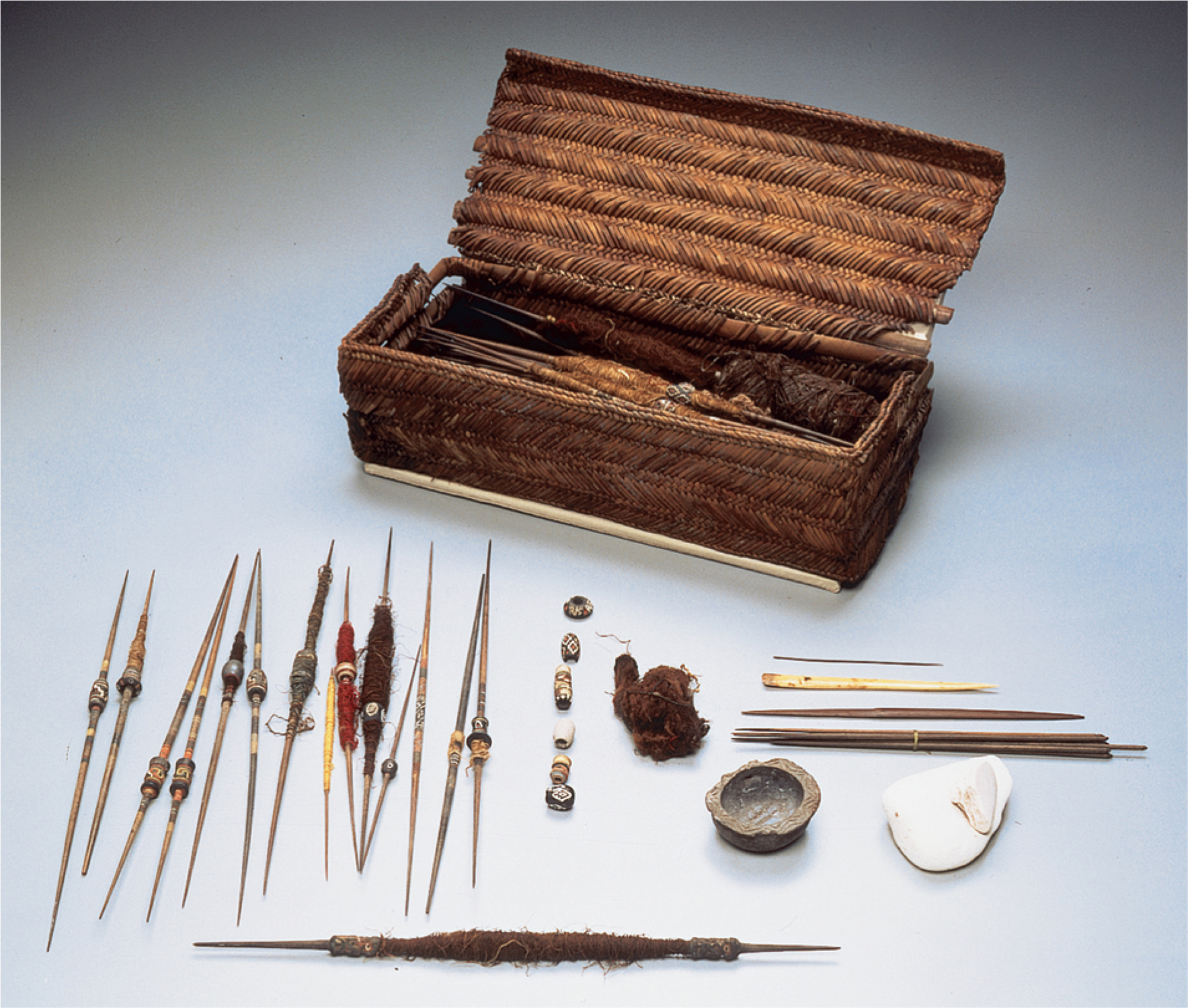The American Promise:
Printed Page 20
The American Promise Value
Edition: Printed Page 18
Cultural Similarities
While trading was common, all native North Americans in the 1490s still depended on hunting and gathering for a major portion of their food. Most of them also practiced agriculture. Some used agriculture to supplement hunting and gathering; for others, the balance was reversed. People throughout North America used bows, arrows, and other weapons for hunting and warfare. To express themselves, they drew on stones, wood, and animal skins; wove baskets and textiles; crafted pottery, beads, and carvings; and created songs, dances, and rituals.

North American life did not include features common in Europe during the 1490s. Native North Americans did not use writing, wheels, or sailing ships; they had no large domesticated animals such as horses or cows; their only metal was copper. However, the absence of these European conveniences mattered less than Native Americans’ adaptations to local natural environments and to the social environment among neighboring peoples, adaptations that all native North Americans held in common.
It would be a mistake, however, to conclude that native North Americans lived in blissful harmony. Archaeological sites provide ample evidence of violent conflict. Warfare was common, making violence and fear typical features of ancient American life. Warfare not only killed people and destroyed their settlements, but victors often took captives, especially women and children, and often treated them as slaves. Skeletons, like those at Cahokia, not only bear the marks of wounds but also exhibit clear signs of ritualistic human sacrifice. Religious, ethnic, economic, and familial conflicts must have occurred, but they remain in obscurity because they left few archaeological traces. In general, anxiety and instability must have been at least as common among ancient North Americans as feelings of peace and security.
Native North Americans not only adapted to the natural environment but also changed it in many ways. They built thousands of structures, from small dwellings to massive pueblos and enormous mounds, permanently altering the landscape. Their gathering techniques selected productive and nutritious varieties of plants, thereby shifting the balance of local plants toward useful varieties. The first stages of North American agriculture, for example, probably involved Native Americans gathering wild seeds and then sowing them in a meadow for later harvest. To clear land for planting seeds, native North Americans set fires that burned off thousands of acres of forest.
Ancient North Americans also used fires for hunting. Hunters often started fires to frighten and force together deer, buffalo, and other animals and make them easy to slaughter. Indians also started fires along the edges of woods to burn off shrubby undergrowth, encouraging the growth of tender young plants that attracted deer and other game, bringing them within convenient range of hunters’ weapons. The burns also encouraged the growth of sun-
Because the fires set by native North Americans usually burned until they ran out of fuel or were extinguished by rain or wind, enormous regions of North America were burned over. In the long run, fires created and maintained a diverse and productive natural environment. Fires, like other activities of native North Americans, shaped the landscape of North America long before Europeans arrived in 1492.
REVIEW What cultural similarities did native peoples of the Western Hemisphere share in the 1490s, and why?